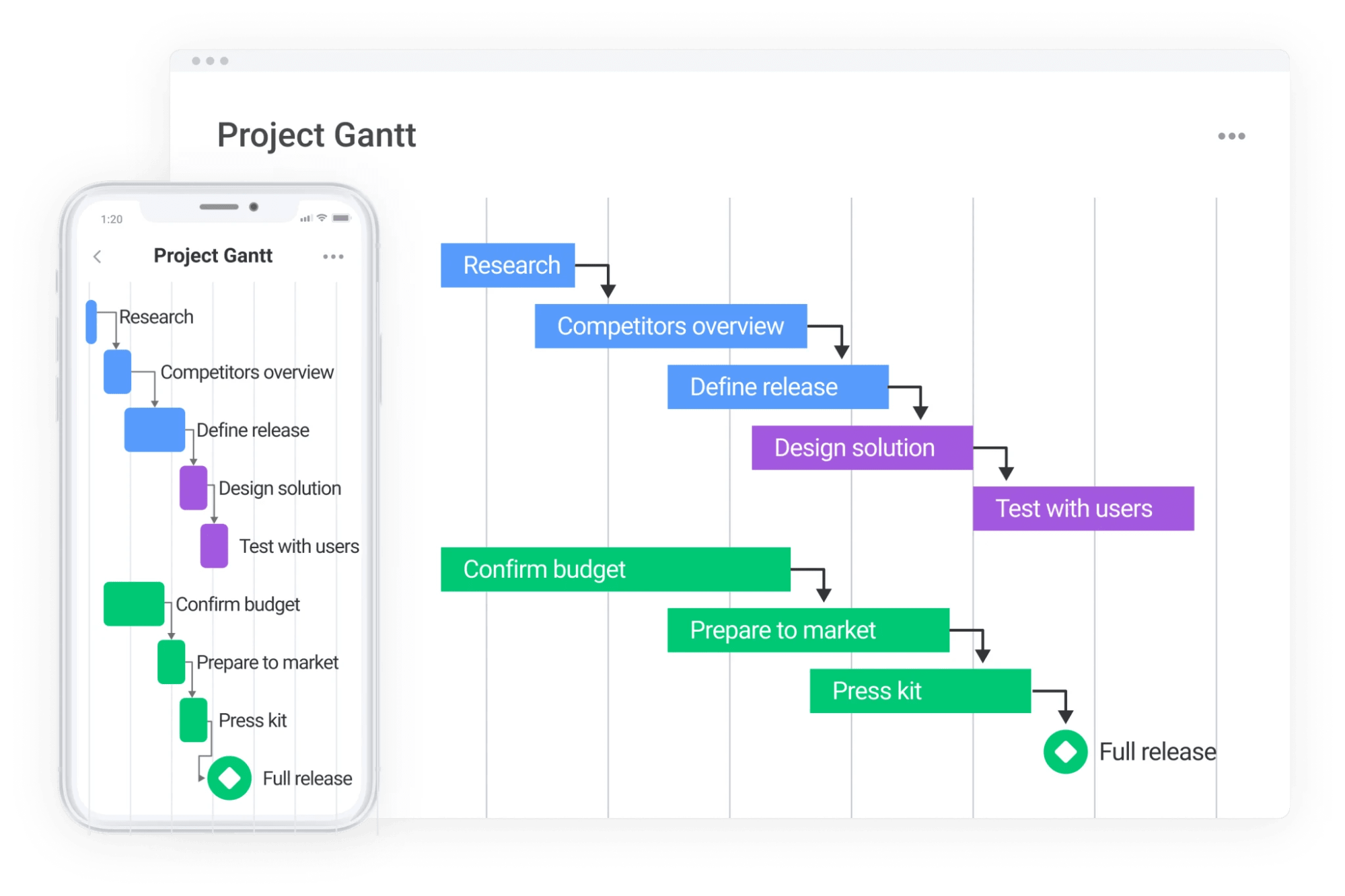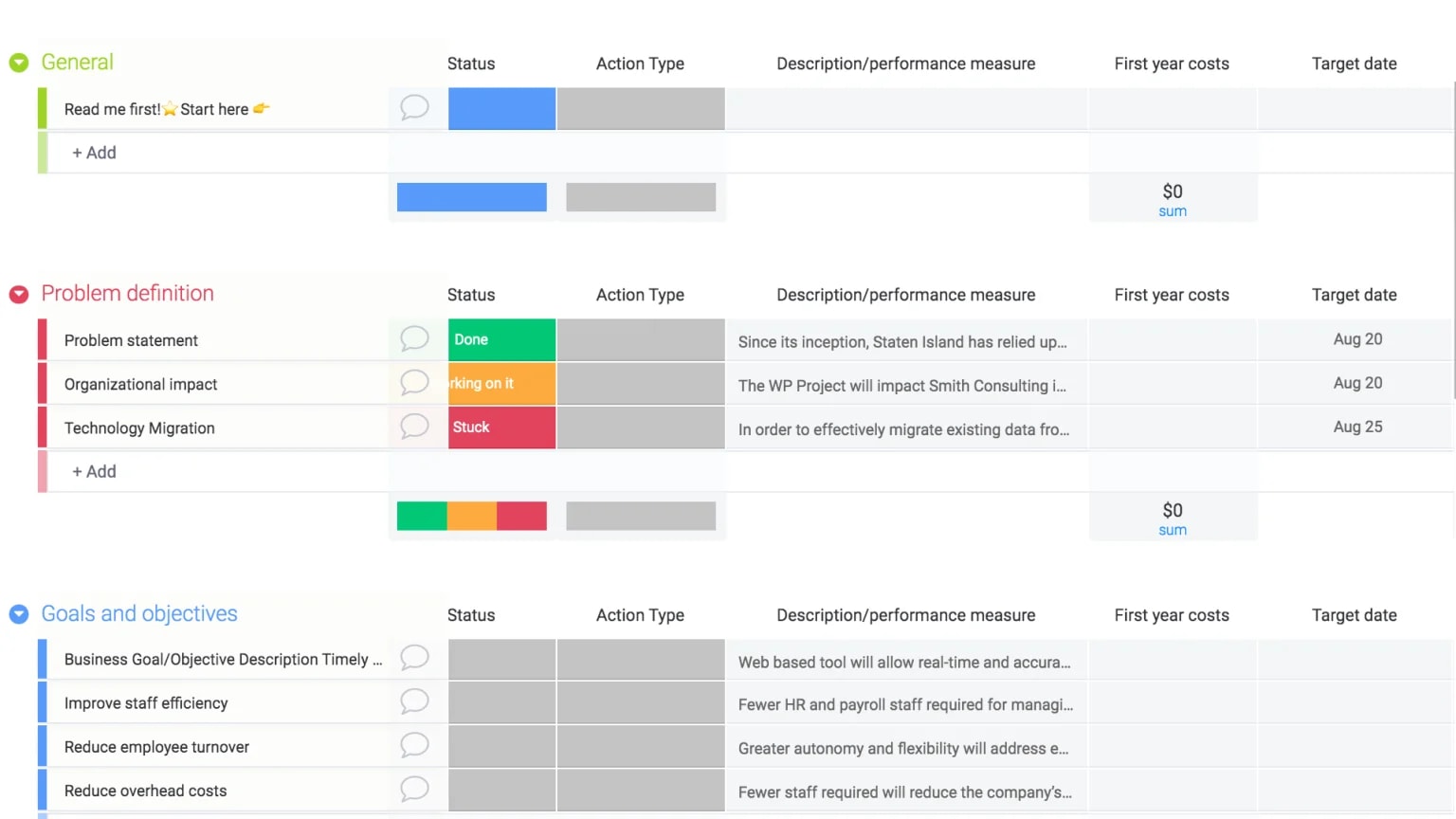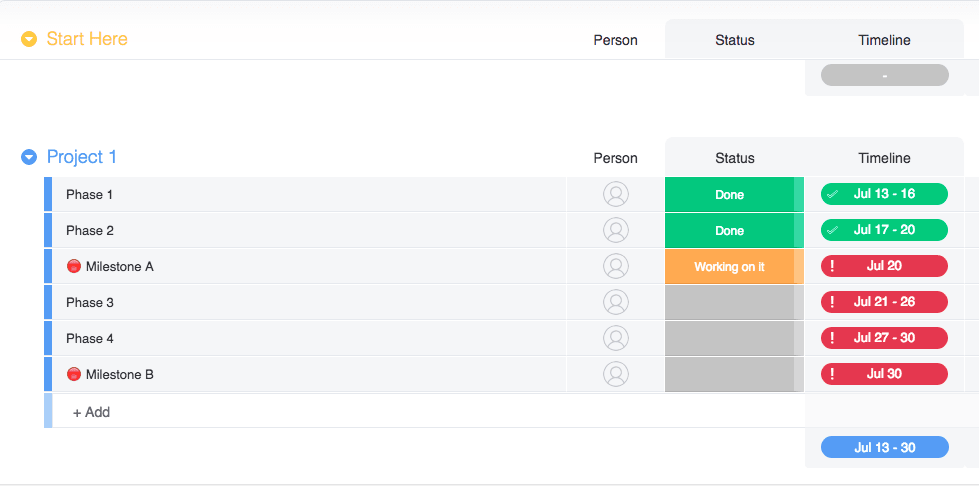Identifying milestones is a crucial, but sometimes overlooked function of the project planning process. While most people tend to consider milestones simply as start and delivery dates, there are usually other key events throughout the project life cycle that signal important progress or actions.
The best way to stay on top of your milestones is to create a milestone chart or to use project management software with views and calendars that make them easy to identify. This article will dive deeper into project milestones and highlight how you can be a milestone master using monday.com.
What is a project milestone?
The emperor of ancient Rome once decided he wanted a better understanding of how long the roads were in his territory. He sent out his men to place stones every mile along every road in the Empire. Today, these first milestones can be found in every territory that used to be part of Rome, from Britain to Turkey.
The interesting thing about these early milestones is that their placement is arbitrary. The stones were placed about 5,000 paces apart — in other words, the people placing the milestones were the same people who defined the length we now call a “mile.” Today, we use project milestones to build more than just highway systems. But the fundamental character of milestones hasn’t changed.
A milestone is what you decide it is. Sorry if you were hoping for something more definite, but as a project manager, your milestones are entirely up to you.
Milestones are all about marking a project’s progress toward success, and every project is judged by a different standard.The start and end of your project are natural milestones. In between, look for times when it makes sense to look around and take stock.
Some project managers like to use time to mark a project’s phases. They’ll place a milestone every month as an opportunity to reappraise their approach.
Others prefer to use approvals. When upper management signs off on the project plan, designs, or final product, those can serve as milestones.
(This still works if your company is small enough that you are upper management). Of course, milestones are useless without a chart. For the rest of the article, we’ll focus on how to go from a blank page to a professional milestone chart.
How do you create a milestone chart?
Practically speaking, milestones are most useful on a physical project timeline, especially a Gantt chart.

1: Write a project charter
The project charter is the best starting point for getting your key milestones organized. A project charter is a key step in integrated project management.
It’s a single document, a few pages at most, that lays out every important detail about your project. It’s like your project’s constitution. Instead of a dry word document, you can also create your project charter in a fun, brightly-colored template like this one:

Anyone who reads your project charter should be able to figure out exactly what you’re trying to do, how you’ll do it, and when you expect to be done. Once you’ve got a charter, you’re halfway to a milestone chart already.
Instead of trying to fabricate your milestones out of whole cloth, base them in the fundamental truths of your project. Your charter will prepare you for the next step toward creating your milestone chart: the project timeline.
2: Create your project timeline
When you read your project charter, a few key goals should become clear. Whether it’s an app, a building, or a holiday meal, there are certain features your project can’t be complete without. Determine how long it will take to achieve each of these goals. Be realistic — assume that you haven’t anticipated every possible setback.
Measure each phase of your project in detail. Even if you have an Agile Scrum team where everyone is working in parallel, you should have an idea for what you want to get finished during each sprint. Imagine that you’re telling the story of your project, from conception to completion.
When you can point to any day over the next two months and say what you’ll be doing on the project at that time, you’re ready for the next phase.
A project timeline template makes this easy.

3: Identify your key milestones
When you read over your project timeline, some key moments should become obvious.
Pick out the specific, relevant moments in your project’s journey to completion. These are the moments you’re going to mark with milestones.
Look for points where preliminary goals are fulfilled, or where something fundamental changes about the project — like when it moves from design to implementation.
Maybe the first big turning point is the approval of a final design. Maybe it’s the completion of UX research. Or a completed UX. Undoubtedly, it’s a critical moment when you can start testing a working version.
If your project is a story, these are the big plot beats. You can even think of them as the end of one act and the beginning of the next. When you’re ready, the final step is to build your visual milestone chart.
4: Create your milestone chart
First, plot out your project timeline visually. You can do this any way you like — on a whiteboard, on Excel, on a napkin — but we have one way we’d recommend. See the next section for details.
Whatever you choose, it needs to have some key characteristics:
- A clear illustration of the order in which each phase of the project occurs
- Milestones placed in the appropriate spots between the project phases
- Expected completion times for all phases, leading into expected times each milestone will be reached
A Gantt chart is the most popular way to handle this. Milestones look very impactful when they’re rendered as boundaries on a left-to-right timeline.
However, a table works just as well.

The monday.com project milestones template, pictured above, is a good example. You can even turn it into a Gantt chart using the different views we offer.
How do you create a milestone chart in Excel?
Microsoft Excel is the first place most project managers go when they need a milestone chart. It’s a versatile platform you can use to make pretty much anything.
Everything in Excel starts with inputting data. For a milestone chart, you’ll need 3 columns:
- 1 for dates
- 1 for describing the project phase
- 1 for the location of the text.
In the last one, alternate the values 10 and -10 (you’ll see why in a moment). Select all the data, then go to the Line Chart menu and insert a “Line With Markers” chart.
Now comes the tricky part. Right-click the chart that just appeared, and click “Select Data” on the drop-down menu. On the left of the panel that appears, you’ll see a box called “Legend Entries.” Click “Remove” three times to clean it out. Then click “Add,” name the new series “Date,” and add the activity labels as the values.
Now, click the “Edit” button under Horizontal Axis Labels. Select the column of dates. Add another series, label it “Placement,” and pick the column of 10s and -10s as the values. Click OK on both windows, and you’ve got a chart!
Well, not quite. If you want it to look clean, you need to edit the labels, and maybe change the line color so it’s not a zigzag.
Look, we really do like Excel, but wouldn’t it be easier to use a platform where you can do all of that in a few clicks?
The monday.com milestone chart template is designed to make fully collaborative milestone dashboards as easy as possible. You can build a beautiful Gantt chart or table in minutes, then move on with your day.
Because nobody wants “create project timeline” to be the longest item on the project timeline.
Add milestone planning to your project management best practices
All these tools we’ve built at monday.com have one ultimate purpose: to make it easier to work without limits.
Check out our templates today to keep your milestones top of mind, and you might just learn what “better” looks like for you.

